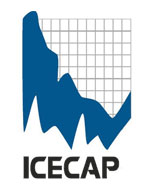By hauntingthelibrary
Sometimes you don’t know who’s worse: the global warming alarmists, banging the pan with their latest prediction of impending doom, or the mainstream media who seem to not only let them, but positively help them,
For years, for years, the warmists banged on and on about the need to switch from taking oil out of the ground to renewable sources, such as ethanol, derived from corn. They got their way. The American Congress mandated that a certain amount of fuel must come from corn ethanol, come what may.

And what happened? What do you think would happen? The mandate meant that vast quantities of perfectly good corn was diverted from the world’s food supply and turned into ethanol for what even environmentalists now admit were “very marginal” gains:
Former U.S. Vice President Al Gore has said he made a mistake promoting first generation corn ethanol during his presidential campaign in 2000.
Gore says he was more concerned with garnering votes from farmers in Tennessee and Iowa than with what was best for the environment. A clean energy enthusiast, Gore says corn ethanol is not a sustainable alternative to fossil fuels. The process of converting corn into ethanol is highly energy intensive and also requires using a food crop for fuel.
Gore contends corn ethanol is negatively impacting food prices and that there are better biofuel solutions to be developed and supported
The energy collective. Al Gore Says Supporting Corn Ethanol Was A Mistake.
Everyone knows this has been a total disaster. Reuters now reports that a quarter of America’s corn harvest now goes to making ethanol with totally predictable consequences on world food prices. A child of five could’ve predicted this scenario.
So should we be surprised that the latest Worldwatch press release warns that overpopulation and global warming are to blame for rising food prices?
Our early 21st century civilization is in trouble. We need not go beyond the world food economy to see this. Over the last few decades we have created a food production bubble - one based on environmental trends that cannot be sustained, including overpumping aquifers, overplowing land, and overloading the atmosphere with carbon dioxide.
The challenge is to quickly reduce carbon emissions, stabilize population, and restore the economy’s soils, aquifers, forests, and other natural support system”.
Worldwatch Press Release: ‘When Will the Food Bubble Burst?’
Reading this, you’d think it was global warming and overpopulation to blame for rising food prices. And that’s exactly how it’s been reported. Most newspapers and media get the majority of their stories from the major news wire services like AFP or Reuters. they don’t have the resources to check stuff out properly and rely on the wire services to do this for them. Here’s how Reuters reported it:
The rapid surge in staple food prices in 2008 that sparked global riots and sent millions into poverty is back. Now, researchers say that because of global warming and trends in population, these dramatic price movements in the food economy are likely here to stay.
Reuters. On the Frontlines of a Warming World, 925 Million Undernourished People.
On the second page of the news wire, Reuters does get around to mentioning other factors, but as an afterthought. As you can tell from the title and the opening paragraph, the article pins rising food prices on overpopulation and global warming.
But elsewhere on the Worldwatch website, far away from the press release for easy consumption, is the full report on rising food prices. Still as alarmist, but buried halfway down the report, barely visible, is the truth:
The combined effect of these three growing demands is stunning: a doubling in the annual growth in world grain consumption from an average of 21 million tons per year in 1990-2005 to 41 million tons per year in 2005-2010. Most of this huge jump is attributable to the orgy of investment in ethanol distilleries in the United States in 2006-2008. Earth Policy Institute. The Great Food Crisis of 2011
Even Worldwatch has to admit this fact. It’s not global warming and overpopulation that has driven food prices up but biofuels. But you wouldn’t get this information from the press release, you have to actually read the report for that.
Food riots in Algeria, food riots in Haiti. People dying. People starving. And why? Because of the insane push for a “sustainable” alternative to petrol, one that even Gore admits was a damn stupid idea, driven by politics not science.
And don’t think this is coming as a surprise. Three years ago the UN’s Special Rapporteur on the Right to Food slammed the drive for biofuels as a “criminal path” that was leading to hunger, starvation, rioting and death:
GENEVA, Switzerland, April 28, 2008 (ENS) - The United States and the European Union have taken a “criminal path” by contributing to an explosive rise in global food prices through using food crops to produce biofuels, the United Nations special rapporteur on the right to food said today.
At a press conference in Geneva, Jean Ziegler of Switzerland said that fuel policies pursued by the U.S. and the EU were one of the main causes of the current worldwide food crisis.
Environment News Service. UN: Biofuel Production ‘Criminal Path’ to Global Food Crisis’.
That’s right - the “food crisis” of rising food prices in 2008 was caused by pointlessly diverting food into fuel, exactly the same as now. The reports blaming overpopulation and global warming are smokescreens. The vast majority, the overwhelming majority of the rise in prices is due to perfectly good food being pointlessly turned into fuel that benefits (hardly) anyone and costs taxpayers a fortune.
So, let’s spell it out. Here’s what’s happened:
1) Gore and other global warming cheerleaders push for biofuels
2) America and EU mandate targets for biofuel use.
3) Quarter of corn production goes to fuel use, prices skyrocket.
4) NGO’s issue report blaming global warming and overpopulation.
5) The media repeat this line without investigation or even reading the report properly.
And these are the people who believe that they know how to save the world. Who are demanding a total reorientation of everything. How we eat, live, work, travel - everything. They’ve driven up the price of food in a way even the UN calls “criminal” and then they turn around and say its global warming and overpopulation.
But then, that’s how it works. Read more here.
The Washington Times
Imagine if a former military officer, a traditional-values conservative now an attache at the State Department, wrote for a largely foreign audience to urge an international boycott of U.S. goods. The aim was to ruin the American economy to protest the new policy of allowing open homosexuality in the armed forces. Media outlets and politicians would be screaming for his dismissal. Free speech is one thing, but nobody on the taxpayer dole in a position of responsibility would be allowed to call for the destruction of our economy. One way or another, the man would be forced out.
Now consider James E. Hansen, director of the taxpayer-funded NASA Goddard Institute for Space Studies. Last week, blogger Marc Morano discovered a Nov. 24 blog post by Mr. Hansen calling on China to lead an international effort to impose fees on carbon-dioxide emissions, then lead the World Trade Organization to allow import fees on goods from any county - with the U.S. being the target - without such fees. The goal would be to punish America, causing “continual descent into second-rate and third-rate economic well-being,” until the “fossil-money- ‘democracy’” no longer “rules the roost in Washington.” Mr. Hansen also praised communist Chinese leadership for “tak[ing] the long view ... in contrast to the West with its [lamentably] short election cycles.”

This blog-burst followed a Hansen trip to the Middle Kingdom, where he wrote similar columns for Chinese newspapers. This is part of a continuing pattern of behavior that could be in violation of ethical rules for civil servants. On Wednesday, the Environmental Law Center of the American Tradition Institute filed a lengthy Freedom of Information Act (FOIA) request suggesting Mr. Hansen’s office has countenanced employment and honoraria receipts, without legally required waivers, outside of taxpayer-funded jobs. The FOIA request also sought apparently missing “statement* of conflicts of interest by James E. Hansen” and “any internal discussion of any cautions or warnings of actual or possible disciplinary action” involving Mr. Hansen.
His anti-democracy disposition is real. Mr. Hansen supports American courts forcing carbon-dioxide limits on the public without presidential or congressional action. A year ago, he endorsed “Time’s Up” by Keith Farnish, who argued, “The only way to prevent global ecological collapse and thus ensure the survival of humanity is to rid the world of Industrial Civilization.” The book considers “razing cities to the ground ... along with an (almost certainly necessary) element of sabotage.”
U.S. taxpayers shouldn’t have to pay the salary of an anti-American loose cannon like Mr. Hansen.
See post here.
-------------
ATI Environmental Law Center Seeks NASA Records on Dr. James Hansen
Today the American Tradition Institute’s Environmental Law Center filed a federal Freedom of Information Act request with NASA, seeking records detailing whether and how ‘global warming’ activist Dr. James Hansen of NASA’s Goddard Institute for Space Studies (GISS) has complied with applicable federal ethics and financial disclosure laws and regulations, and NASA Rules of Behavior.
This request seeks records of longtime, taxpayer-funded activist Hansen, in the knowledge that FOIA-released records and other documents show his GISS colleague, Dr. Gavin Schmidt, has edited the activist blog RealClimate on regular business hours when he is nominally working for the taxpayer. In fact, FOIA-released records indicate this third-party activism was considered part of Schmidt’s job, seeking to rehabilitate the discredited ‘hockey stick’ and otherwise promoting GISS’s activist line.
The request for Hansen’s ethics-compliance records comes on the heels of his latest adventures in public advocacy, writing in the Chinese newspaper South China Morning Post to blame the United States for modern climate change and his ritually exaggerated claims of future catastrophe, as well as some by now typically nasty sneering at American democracy in a follow-up article published on his website (now taken down but surely produced, as FOIA records have already revealed that so much of his privately posted work has been produced, on taxpayer time).
This is the latest in a long line of often radical behavior by Hansen that, were it engaged in by a government employee on the other side of the ‘global warming’ issue, would have resulted in discipline and possibly termination years ago. Dr. Hansen may state that he is speaking as a private citizen - in fora ranging from his testimony supporting lawbreaking in the name of global warming, to extreme public advocacy only tolerated, if even celebrated, because of his position with NASA - but the obvious truth is that he is trading on his platform as a NASA scientist to gain the wide audience he has (Hansen is an astronomer).
“It seems that Hansen’s access to and use of the media has so cowed his NASA superiors that his office has been allowed to operate unencumbered by applicable ethics requirements which other NASA employees, not so darling to the media, must comply with,” said Christopher Horner, ATI’s senior director of litigation. “In fact, in public court pleadings filed in Competitive Enterprise Institute v. NASA, NASA recently revealed that Hansen’s office operated for years in violation of these obligations.”
ATI’s requests build on that record, seeking specific records since 2004 relating to:
Required Approvals and Waivers for Outside Employment
Required Financial Disclosure/Conflict of Interest Disclosure
Internal discussion of possible or actual disciplinary actions
ATI looks forward to NASA’s compliance with this request, in stark contrast to how it has recently treated other requests for GISS records, with expectation that NASA will provide the responsive records in the statutorily permitted period of time.
See ATI’s Freedom of Information Act request to NASA seeking James Hansen’s records relating to compliance with ethics and financial disclosure laws. (here).
For an interview with Christopher Horner, senior director of litigation for the American Tradition Institute Environmental Law Center, contact him at chris.horner@atinstitute.org.
By Richard S. Lindzen on GWPF
The notion of a static, unchanging climate is foreign to the history of the earth or any other planet with a fluid envelope. The fact that the developed world went into hysterics over changes in global mean temperature anomaly of a few tenths of a degree will astound future generations. Such hysteria simply represents the scientific illiteracy of much of the public, the susceptibility of the public to the substitution of repetition for truth, and the exploitation of these weaknesses by politicians, environmental promoters, and, after 20 years of media drum beating, many others as well.
Climate is always changing. We have had ice ages and warmer periods when alligators were found in Spitzbergen. Ice ages have occurred in a hundred thousand year cycle for the last 700 thousand years, and there have been previous periods that appear to have been warmer than the present despite CO2 levels being lower than they are now. More recently, we have had the medieval warm period and the little ice age. During the latter, alpine glaciers advanced to the chagrin of overrun villages. Since the beginning of the 19th Century these glaciers have been retreating. Frankly, we don’t fully understand either the advance or the retreat.
For small changes in climate associated with tenths of a degree, there is no need for any external cause. The earth is never exactly in equilibrium. The motions of the massive oceans where heat is moved between deep layers and the surface provides variability on time scales from years to centuries. Recent work (Tsonis et al, 2007), suggests that this variability is enough to account for all climate change since the 19th Century.
For warming since 1979, there is a further problem. The dominant role of cumulus convection in the tropics requires that temperature approximately follow what is called a moist adiabatic profile. This requires that warming in the tropical upper troposphere be 2-3 times greater than at the surface. Indeed, all models do show this, but the data doesn’t and this means that something is wrong with the data. It is well known that above about 2 km altitude, the tropical temperatures are pretty homogeneous in the horizontal so that sampling is not a problem. Below two km (roughly the height of what is referred to as the trade wind inversion), there is much more horizontal variability, and, therefore, there is a profound sampling problem. Under the circumstances, it is reasonable to conclude that the problem resides in the surface data, and that the actual trend at the surface is about 60% too large. Even the claimed trend is larger than what models would have projected but for the inclusion of an arbitrary fudge factor due to aerosol cooling. The discrepancy was reported by Lindzen (2007) and by Douglass et al (2007).
Inevitably in climate science, when data conflicts with models, a small coterie of scientists can be counted upon to modify the data. Thus, Santer, et al (2008), argue that stretching uncertainties in observations and models might marginally eliminate the inconsistency. That the data should always need correcting to agree with models is totally implausible and indicative of a certain corruption within the climate science community.
It turns out that there is a much more fundamental and unambiguous check of the role of feedbacks in enhancing greenhouse warming that also shows that all models are greatly exaggerating climate sensitivity. Here, it must be noted that the greenhouse effect operates by inhibiting the cooling of the climate by reducing net outgoing radiation. However, the contribution of increasing CO2 alone does not, in fact, lead to much warming (approximately 1 deg. C for each doubling of CO2).
The larger predictions from climate models are due to the fact that, within these models, the more important greenhouse substances, water vapor and clouds, act to greatly amplify whatever CO2 does. This is referred to as a positive feedback. It means that increases in surface temperature are accompanied by reductions in the net outgoing radiation - thus enhancing the greenhouse warming. All climate models show such changes when forced by observed surface temperatures. Satellite observations of the earth’s radiation budget allow us to determine whether such a reduction does, in fact, accompany increases in surface temperature in nature. As it turns out, the satellite data from the ERBE instrument (Barkstrom, 1984, Wong et al, 2006) shows that the feedback in nature is strongly negative—strongly reducing the direct effect of CO2 (Lindzen and Choi, 2009) in profound contrast to the model behavior. This analysis makes clear that even when all models agree, they can all be wrong, and that this is the situation for the all important question of climate sensitivity. Unfortuanately, Lindzen and Choi (2009) contained a number of errors; however, as shown in a paper currently under review, these errors were not relevant to the main conclusion.
According to the UN’s Intergovernmental Panel on Climate Change, the greenhouse forcing from man made greenhouse gases is already about 86% of what one expects from a doubling of CO2 (with about half coming from methane, nitrous oxide, freons and ozone), and alarming predictions depend on models for which the sensitivity to a doubling for CO2 is greater than 2C which implies that we should already have seen much more warming than we have seen thus far, even if all the warming we have seen so far were due to man. This contradiction is rendered more acute by the fact that there has been no statistically significant net global warming for the last fourteen years. Modelers defend this situation, as we have already noted, by arguing that aerosols have cancelled much of the warming (viz Schwartz et al, 2010), and that models adequately account for natural unforced internal variability.
However, a recent paper (Ramanathan, 2007) points out that aerosols can warm as well as cool, while scientists at the UK’s Hadley Centre for Climate Research recently noted that their model did not appropriately deal with natural internal variability thus demolishing the basis for the IPCC’s iconic attribution (Smith et al, 2007). Interestingly (though not unexpectedly), the British paper did not stress this. Rather, they speculated that natural internal variability might step aside in 2009, allowing warming to resume. Resume? Thus, the fact that warming has ceased for the past fourteen years is acknowledged. It should be noted that, more recently, German modelers have moved the date for ‘resumption’ up to 2015 (Keenlyside et al, 2008).
Climate alarmists respond that some of the hottest years on record have occurred during the past decade. Given that we are in a relatively warm period, this is not surprising, but it says nothing about trends.
Given that the evidence (and I have noted only a few of many pieces of evidence) strongly implies that anthropogenic warming has been greatly exaggerated, the basis for alarm due to such warming is similarly diminished. However, a really important point is that the case for alarm would still be weak even if anthropogenic global warming were significant. Polar bears, arctic summer sea ice, regional droughts and floods, coral bleaching, hurricanes, alpine glaciers, malaria, etc. etc. all depend not on some global average of surface temperature anomaly, but on a huge number of regional variables including temperature, humidity, cloud cover, precipitation, and direction and magnitude of wind. The state of the ocean is also often crucial. Our ability to forecast any of these over periods beyond a few days is minimal (a leading modeler refers to it as essentially guesswork). Yet, each catastrophic forecast depends on each of these being in a specific range.
The odds of any specific catastrophe actually occurring are almost zero. This was equally true for earlier forecasts of famine for the 1980’s, global cooling in the 1970’s, Y2K and many others. Regionally, year to year fluctuations in temperature are over four times larger than fluctuations in the global mean. Much of this variation has to be independent of the global mean; otherwise the global mean would vary much more. This is simply to note that factors other than global warming are more important to any specific situation. This is not to say that disasters will not occur; they always have occurred and this will not change in the future. Fighting global warming with symbolic gestures will certainly not change this. However, history tells us that greater wealth and development can profoundly increase our resilience.
In view of the above, one may reasonably ask why there is the current alarm, and, in particular, why the astounding upsurge in alarmism of the past 4 years. When an issue like global warming is around for over twenty years, numerous agendas are developed to exploit the issue. The interests of the environmental movement in acquiring more power, influence, and donations are reasonably clear. So too are the interests of bureaucrats for whom control of CO2 is a dream-come-true. After all, CO2 is a product of breathing itself. Politicians can see the possibility of taxation that will be cheerfully accepted because it is necessary for ‘saving’ the earth. Nations have seen how to exploit this issue in order to gain competitive advantages. But, by now, things have gone much further. The case of ENRON (a now bankrupt Texas energy firm) is illustrative in this respect. Before disintegrating in a pyrotechnic display of unscrupulous manipulation, ENRON had been one of the most intense lobbyists for Kyoto.
It had hoped to become a trading firm dealing in carbon emission rights. This was no small hope. These rights are likely to amount to over a trillion dollars, and the commissions will run into many billions. Hedge funds are actively examining the possibilities; so was the late Lehman Brothers. Goldman Sachs has lobbied extensively for the ‘cap and trade’ bill, and is well positioned to make billions. It is probably no accident that Gore, himself, is associated with such activities. The sale of indulgences is already in full swing with organizations selling offsets to one’s carbon footprint while sometimes acknowledging that the offsets are irrelevant. The possibilities for corruption are immense. Archer Daniels Midland (America’s largest agribusiness) has successfully lobbied for ethanol requirements for gasoline, and the resulting demand for ethanol may already be contributing to large increases in corn prices and associated hardship in the developing world (not to mention poorer car performance). And finally, there are the numerous well meaning individuals who have allowed propagandists to convince them that in accepting the alarmist view of anthropogenic climate change, they are displaying intelligence and virtue For them, their psychic welfare is at stake.
With all this at stake, one can readily suspect that there might be a sense of urgency provoked by the possibility that warming may have ceased and that the case for such warming as was seen being due in significant measure to man, disintegrating. For those committed to the more venal agendas, the need to act soon, before the public appreciates the situation, is real indeed. However, for more serious leaders, the need to courageously resist hysteria is clear. Wasting resources on symbolically fighting ever present climate change is no substitute for prudence. Nor is the assumption that the earth’s climate reached a point of perfection in the middle of the twentieth century a sign of intelligence.
See post and references here.
Richard Lindzen is the Alfred P. Sloan Professor of Meteorology at the Massachusetts Institute of Technology and a member of the GWPF’s Academic Advisory Council


